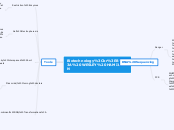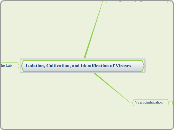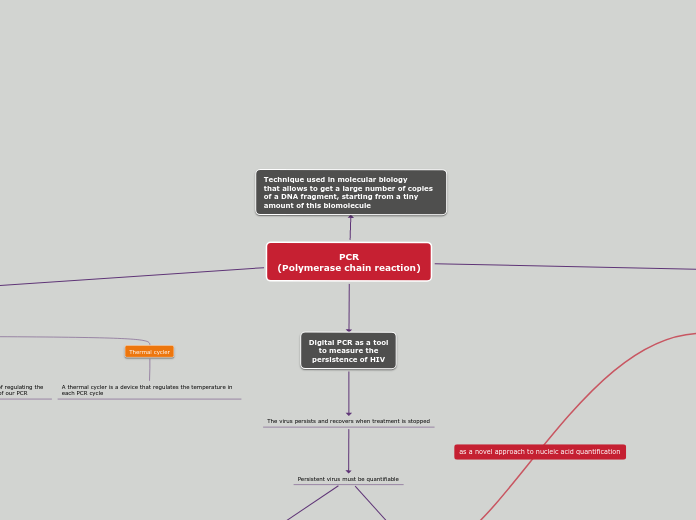Biotechnology
BY: WESLEY HAMILTON
Tools
Recombinant DNA/ Transformations:
WHAT IS IT?
It is the identification, isolation, and insertion of gene of interest into a vector such as a plasmid or bacteriophage to form a recombinant DNA molecule and be cloned producing large quantities of that gene fragment that would not otherwise be found in the genome. Transformation is DNA from a cell that is changed by introducing different genetic materials.
HOW DOES IT WORKS?
identification and isolation of gene of interest or DNA fragment to be cloned.
insertion of this isolated gene in a suitable vector.
introduction of this vector into a suitable organism/cell called host (transformation).
selection of transformed host cell.
multiplication or expression of the introduced gene in the host.
WHAT IS ITS SIGNIFICANCE?
The technology is important because it allows multiple copies of genes and the insertion of foreign genes into other organisms to give them new traits.
APPLICATIONS TO THE WORLD?
Where it has proven particularly useful has been in mapping out the human genome, the creation of transgenic animals, and the development of insect-resistant crops. It is also pivotal to genetic tests carried out in forensic science and archaeology as well as in tests for determining hereditary disease and paternity. The technology also forms the backbone of hepatitis and human (HIV) diagnostic tests. Recombinant DNA technology has also proven important to the production of vaccines and protein therapies such as human insulin. It is also used to produce clotting factors for treating haemophilia and in the development of gene therapy.
Plasmids/ Cloning Vectors
WHAT IS IT?
A plasmid is a small double-stranded unit of DNA, typically circular and exists independent of the chromosome and is capable of self-replication.
HOW DOES IT WORK?
they work by taking a small piece of DNA from an organism (usually bacteria), add foreign DNA fragments for cloning purposes.
WHAT IS ITS SIGNIFICANCE?
They serve us as a tool for inserting genes into bacteria and producing proteins beneficial to humans such as the human insulin gene. They help us produce (DNA vaccines) for HIV aids, Ebola, and influenza which have benefits over traditional vaccines. They can be manufactured on a large scale at low cost
APPLICATIONS TO THE WORLD?
One of their most important functions is as a form of transportation to introduce foreign DNA into bacteria, a fundamental step for genetic engineering and many other biotechnology applications.
CRISPR- Clustered Regularly Interspaced Short Palindromic Repeats
WHAT IS IT?
CRISPR/Cas9 is a technique that allows for the highly specific and fast changes in DNA, in a genome.
HOW DOES IT WORK?
In bacteria a small piece of virus is captured and used to create DNA segments known as CASPR arrays, which allow bacteria to remember the virus. This works in the body by transcribing short RNA sequences, that are capable of matching to a sequence of DNA. Once the target is found CAS9 an enzyme produced by the CRISPR system, bind to the DNA, makes it into fragments, which then shuts off the target gene.
WHAT IS ITS SIGNIFICANCE?
it makes it possible to carry out genetic engineering reducing time from years to weeks and very expensive to very low cost.
It is also different in that it is not species-specific, so can be used on organisms previously resistant to genetic engineering.
APPLICATIONS TO THE WORLD?
The technology is used to produce cheese and yoghurt. Since then the technology has been used to delete, insert and modify DNA in human cells and other animal cells grown in petri dishes. Scientists are also using it to create transgenic animals such as mice, rats, zebrafish
Gel Electrophoresis
WHAT IS IT?
Gel electrophoresis is used to separate macromolecules like DNA, RNA and proteins mixtures based on size.
HOW DOES IT WORK?
DNA is negatively charged, once DNA fragments are put into the wells of the negative end, the fragments will move down to the positive end of the gel. It is done by adding the restriction enzyme into the DNA in order to create fragments, then after it will be put into the wells where the smaller fragments travel further down and the longer ones not as far.
WHAT IS ITS SIGNIFICANCE?
Provides a way of separating DNA.
APPLICATIONS TO THE WORLD?
Gel Electrophoresis is used in many ways such as crime scenes by matching DNA analyze genes from illnesses and comparing it to the person and test fir paternity and DNA fingerprinting.
Restriction Enzymes
WHAT IS IT?
Restriction enzymes are a group of proteins that bacteria produce to cut up the DNA of invading viruses.
HOW DOES IT WORK?
They cut DNA sequences at specific restriction sites. They produce blunt and staggered cuts.
WHAT IS ITS SIGNIFICANCE?
they offer the means to very precisely cut through a double strand of DNA. Over 19,000 restrictive enzymes have been identified to-date. Each of these enzymes recognizes a specific pattern of nucleotides in a DNA sequence.
APPLICATIONS TO THE WORLD?
Such enzymes can be used to splice and insert segments of DNA into other segments of DNA, thereby providing a means to modify DNA and construct new forms. Their ability to recognize and cut at specific points in a DNA sequence has also made them invaluable tools for the physical mapping of DNA, such as carried out in mapping the human genome.
DNA Sequencing
PCR
WHAT IS IT?
PCR is a technique that uses the two matching strands in DNA to amplify a targeted DNA sequence from just a few samples to billions of copies within just a couple of hours (amplification).
HOW DOES IT WORK?
PCR, takes a gene, takes a DNA sequence from it and duplicates it. Over many cycles amplification is used to see if you have a certain condition. 1. Denaturation - double stranded DNA uncoils 2. Annealing - Primers bind to the target site, where DNA polymerase starts to add free floating nucleotides 3. Extension- an enzyme call taq polymerase, is used to join free floating nucleotides together
WHAT IS ITS SIGNIFICANCE?
PCR has dramatically reduced the time and number of steps required to create large quantities of DNA. It has increased the speed and accuracy of diagnostics in the medical field.
APPLICATIONS TO THE WORLD?
In health and medicine it is used to advance our understanding of cancer and human genetic diseases, such as cystic fibrosis and Parkinson's.
PCR also helps determine maternity, paternity, and other blood relationships and is used by forensic scientists to identify individuals based on their genetic profile
Sanger
WHAT IS IT?
DNA sequencing is a process of determining the sequences of nucleotide bases in a piece of DNA. Sanger sequencing involves DNA polymerase enzyme, primer, dideoxy four nucleotides each labelled with a different colour of dye for each, the template DNA thats being sequenced these nucleotides can be added.
HOW DOES IT WORK?
Sequencing an entire genome requires breaking off the DNA into smaller pieces, then sequencing them, then assembling them again. Sanger sequencing was used as a way of determine sequences of many relatively small fragments of human DNA.Process begins with DNA being hated to denature it, then cooled so that the primer can bind, then the temperature is raised again in order for DNA polymerase to synthesize the DNA which will then continue to add nucleotides, until it adds a dideoxy nucleotide, which then no more nucleotides will be added
WHAT IS ITS SIGNIFICANCE?
It is one of the most efficient types of DNA sequencing. Used to sequence individual pieces of DNA. Data from the the Human Genome Project and using Sanger sequencing has also helped fuel the development of gene therapy, a type of treatment designed to replace defective genes in certain genetic disorders.
APPLICATIONS TO THE WORLD?
DNA sequencing is now used for genetic testing for paternity and other family relationships. The technique is also vital to detecting bacteria and other organisms that may pollute air, water, soil and food.
Diagram









